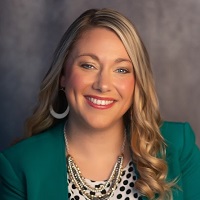Long-Term Care Planning vs. Taxes: Finding a Healthy Balance
Many families discover that trying to mitigate the cost of long-term care can conflict with another common retirement concern — reducing taxes for retirees and their heirs.

Clients often bring to us their unique circumstances paired with specific goals, individual concerns and distinctive aspirations for their retirement years. Despite some differences, they all have one thing in common – they’re craving peace of mind and the certainty that what they’ve saved, no matter how much or little that may be, will cover everything they have planned. Retirement also brings about several risks that threaten certainty, such as longevity, market risk and inflation, followed by the two most common concerns — cost of long-term care and how to reduce or avoid taxes during retirement and upon transfer to heirs.
Both are legitimate concerns. There can be a significant loss of assets to health care costs and in paying extra taxes. Fortunately, there are several solutions for each obstacle. Unfortunately, there exists a tension for many families in planning to tackle one of these hurdles because it can seem to come at the cost of accepting the other. Typical methods for long-term care financing include long-term care insurance, life insurance with accelerated death benefits and asset protection trust planning. Common methods for estate and legacy tax mitigation include Roth conversions and revocable trust planning.
Long-Term Care Insurance (LTC)
LTC insurance is recommended for individuals and families under the age of 65 with $1.5 million to $3 million in investable assets. The reason for the limitation on net worth and age is because of the cost of coverage, compared to what you receive. What was intended and hoped for by many as a method of financing the rapidly escalating cost of assisted living and skilled medical care has instead become less of a total coverage of expenses and more of a hedge against the final bill.

Sign up for Kiplinger’s Free E-Newsletters
Profit and prosper with the best of expert advice on investing, taxes, retirement, personal finance and more - straight to your e-mail.
Profit and prosper with the best of expert advice - straight to your e-mail.
With a chance of living in an elder care facility and the average stay often three or more years, plus the cost of skilled care, it’s no surprise this is a major source of retirement bankruptcies. LTC insurance was the answer to that, and for many years in the early 2000s, policies were sold that would protect a family.
However, as life expectancies with medical conditions increase, along with the rapidly rising cost of care, the premiums for LTC insurance have skyrocketed, and the terms/benefits offered have been dramatically reduced. As a result, these policies are not a good option for families with under $1.5 million in assets, as they are cost prohibitive. If someone has a few million in assets and a large income or cash flow, then it can make sense to have LTC insurance as a simple hedge.
For example, a typical policy might run $6,000 per person per year for a policy to cover a three-year stay in a facility at a max of $300 per day. If a married couple could cash-flow two policies without severely impacting their income and keep those policies for 25 years each, they would spend $300,000 in premiums for a potential offset of three years of care, for each, at $300 per day, for a total of $657,000 worth of care covered.
That is just a little more than 50% in savings per dollar spent on premiums. However, to get the full benefit, both would have to have full stays in a skilled facility for the maximum of the policy limits, which is unlikely.
On the other hand, the time the policy would buy can allow couples to move assets out of their names, thus pursuing other legal strategies and moving to avoid probate and taxes. Unfortunately, without significant assets and income, this is not a viable option for many.
Universal Life Insurance with Accelerated Benefit Riders
For those up to the age of 70 with $3 million to $5 million in investible assets, a better option than LTC insurance may be a universal life policy with accelerated benefit riders (ABRs). While the premiums they pay may be high, often $12,000 to $18,000 per year, such policies act as a multiuse tool, not only providing coverage for LTC, but often covering a significant amount of inherited taxes and providing the opportunity for wealth leveraging to the next generation.
ABRs are a special kind of life insurance rider triggered by medical conditions that allow the death benefit of the policy to be advanced to the owner during their lifetime, often up to 100% of the policy face value, for purposes of funding an extended stay in an assisted living or skilled care facility.
This is different than the terminal illness and viatical riders often found on life insurance, as this is not intended as a payout when a person is near death. Instead, this is for someone healthy who may be entering a facility for some time.
For example, an individual with a $750,000 universal life policy, paying $15,000 per year in premium, would be able to advance as much as they needed from the policy for as long as needed, thereby covering more than seven years in a facility at current rates.
A $15,000 premium paid for 25 years would amount to $375,000, thus giving a 2-to-1 leverage for dollars paid, which is further enhanced by the tax-free nature of life insurance proceeds and loans. Considering the average stay is three years, there may be as much as $450,000 left in the policy to be received tax-free by heirs.
People will often intend this remaining amount to cover residual taxes inherited by heirs from 401(k)s and IRAs, which with $3 million to $5 million of net worth can easily be thousands of dollars.
They may also intend to use proceeds as tax-free income for the surviving spouse, thus reducing taxable income and limiting the amount of income-related monthly adjustment amount increases to Medicare premiums and to reduce Social Security taxation.
This also becomes a way to limit qualified investible asset withdrawals to only required minimum distribution (RMDs).
Finally, the policy becomes a source of supplemental cash for the owner during their healthy years as well, as they can always elect to take a loan against the policy if their health is maintained.
Asset Protection Trust Planning
For those with a net worth less than $2 million, asset protection planning is essential to protect against the rising cost of long-term care. This is where the tension is felt most intensely, people have to choose to either defer or remove taxes or to protect assets from medical expenses. People often believe only the very wealthy benefit from trust planning. However, in our experience, those with fewer means have more to lose and therefore have more need for protection. It should be noted that, while a rising number of states recognize what is called a domestic asset protection trust, that is not the type of trust planning referenced here. Those trusts are designed as general creditor protection, but do not include the necessary language to protect assets from Medicaid spenddown or estate recovery.
Self-settled wholly discretionary grantor trusts, which are irrevocable, can be used to house certain assets that Medicaid would otherwise expect families to liquidate and spend prior to approving benefits to cover the bulk of the cost. It should be noted that in many states, certain provisions of irrevocable trusts can be changed, such as who serves as trustee and who the beneficiaries are (and in what amounts). The trustee should not be one of the grantors of the trust, and there is a five-year look-back on its funding. This means if a grantor needs long-term care prior to five years after assets were moved to the trust's name, other arrangements must be made.
For that reason, families are encouraged to start planning early – ideally just prior to or at retirement. The needs and goals of the family drive what assets are placed into trust, but not everything goes. From a tax perspective, it would be unwise to move IRAs or other qualified accounts into an irrevocable trust because such a transfer would be fully taxable as a complete distribution of the account. Roth IRAs can be moved tax-free into trust, but such accounts would then lose their Roth status.
Careful planning, preferably with advice from financial, legal and tax professionals, can establish a balance between maximizing protection and minimizing taxes. It is common for families to end up taking distributions from their IRAs over time, paying the taxes at the lowest possible tax bracket on those dollars, then moving those funds into trust where they can be reinvested. It is important to know your state laws around how Medicaid treats qualified accounts for long-term care planning.
Roth Conversions
Unlike 401(k)s and traditional IRAs, Roth IRAs receive the unique benefit of having investments grow and distribute tax-free. Although new money Roth contributions are limited per year to a few thousand dollars, Roth conversions from 401(k)s and traditional IRAs are unlimited. Many seek to undo the tax bomb waiting in their retirement accounts by converting those accounts to Roth IRAs over time, moving chunks of assets and paying the taxes, but staying within current tax brackets.
If done correctly, surviving spouses and heirs will have much lower inherited tax issues to unravel, and Roth owners can avoid spiking their taxable incomes due to withdrawals in their later retirement years.
Revocable Trust Planning
Revocable trusts have long been the preferred vehicle for estate planning for probate avoidance and tax mitigation strategies. For those with a net worth that is likely to run up against the estate tax at death, currently over $12 million per person, but likely dropping to $5 million or less, revocable trusts allow families to combine assets into one trust that splinters off after the death of the first spouse, which has the outcome of doubling the estate tax exemption (each spouse gets their own exemption).
When the federal estate tax kicked in for any estate worth more than $1 million, many more families had to plan appropriately for how to mitigate that risk. However, the current federal estate tax exemption is $12.92 million per person, which is automatically doubled for married couples. Such trust planning is only currently beneficial to families with a lower state estate tax exemption or who are likely to have estates worth more than $25.84 million. Future tax changes are likely to lower the threshold significantly to only a several million per person.
Revocable trusts can still provide tax benefits to families who are interested in requiring their beneficiaries to take distributions from inherited retirement accounts over time, rather than in a lump sum. If left to a beneficiary directly, that beneficiary may choose how and when they take distributions, but a revocable trust that has SECURE Act compliant language (meaning it requires full distribution within 10 years) can receive the funds and then direct the distributions over time.
In the context of long-term care, revocable trusts offer no protection because Medicaid looks at assets owned by a revocable trust the same as if the assets were in the individual’s name. Medicaid can force the revocation of a revocable trust to reach the assets held by that trust.
Taxes and Medicaid are two hot topics in retirement and estate planning, and both must be carefully considered. Under current laws, you can maximize protection in one area or the other, but not both. With competent, multifaceted evaluation and guidance, a healthy balance can usually be found that will offer peace of mind for today and every day to come.
John Graves takes pride in guiding his clients through the demanding retirement planning process with customized plans molded to help withstand whatever the future holds. John specializes in retirement planning and working with clients pre- and post-retirement who desire to protect their money and ensure it is there when they need it most. John and his team at G&H Financial Group pride themselves on building and maintaining long-lasting relationships with their clients and families. John’s career has always been in finance and asset protection. After law school he went to work for U.S. Bank N.A. Direct Lending in consumer financing as a federal regulatory officer. Raised in the bluegrass fields of Lexington, Kentucky, the heart of thoroughbred horse racing country, his parents and grandparents taught him that family and faith are the foundation of a successful life. John and his wife, Lindsay, with their four children, support that belief with their continuous involvement in the community and their faith. Family is what drives John to continue his passion for retirement planning. John has made it his mission to educate and teach others what they can do to assist that their retirement goals turn into reality. You can reach him at (330) 915-8030 and jgraves@gandhfg.com.
Lindsay Graves, founding partner of The Graves Law Firm, is passionate about assisting families through the challenges of the aging process to ensure dignity and financial preparedness with a comprehensive and compassionate approach. Her law firm focuses on helping clients to articulate their goals for asset preservation and long-term care and making them a reality, avoiding bankruptcy and securing wealth for loved ones. Lindsay and her team pride themselves on building and maintaining long-lasting relationships with their clients and families. Lindsay earned her Juris Doctorate from DePaul University in Chicago, where she served as law clerk for a renowned elder law firm representing clients in the areas of wills, trusts and guardianship. While at DePaul, she was honored to be elected to the Student Bar Association and was selected to compete on the school’s mock trial team. She studied internationally, being taught by the Honorable Chief Justice of the United States Supreme Court, John Roberts, at the University of Innsbruck’s Institute of World Legal Problems in Innsbruck, Austria. Her undergraduate degree is a B.S. in Business from the Miami University Farmer School of Business, where she graduated with honors. You can reach her at (330) 915-8010 and lgraves@graveselderlaw.com and find her on Facebook.
Get Kiplinger Today newsletter — free
Profit and prosper with the best of Kiplinger's advice on investing, taxes, retirement, personal finance and much more. Delivered daily. Enter your email in the box and click Sign Me Up.

John Graves takes pride in guiding his clients through the demanding retirement planning process with customized plans molded to help withstand whatever the future holds. John specializes in retirement planning and working with clients pre- and post-retirement who desire to protect their money and ensure it is there when they need it most. John and his team at G&H Financial Group pride themselves on building and maintaining long-lasting relationships with their clients and families.
-
 6 Stunning Waterfront Homes for Sale Around the US
6 Stunning Waterfront Homes for Sale Around the USFrom private peninsulas to lakes, bayous and beyond, Kiplinger's "Listed" series brings you another selection of dream homes for sale on the waterfront.
By Charlotte Gorbold Published
-
 Six Reasons to Disinherit Someone and How to Do It
Six Reasons to Disinherit Someone and How to Do ItWhether you're navigating a second marriage, dealing with an estranged relative or leaving your assets to charity, there are reasons to disinherit someone. Here's how.
By Donna LeValley Published
-
 Should You Still Wait Until 70 to Claim Social Security?
Should You Still Wait Until 70 to Claim Social Security?Delaying Social Security until age 70 will increase your benefits. But with shortages ahead, and talk of cuts, is there a case for claiming sooner?
By Evan T. Beach, CFP®, AWMA® Published
-
 Retirement Planning for Couples: How to Plan to Be So Happy Together
Retirement Planning for Couples: How to Plan to Be So Happy TogetherPlanning for retirement as a couple is a team sport that takes open communication, thoughtful planning and a solid financial strategy.
By Andrew Rosen, CFP®, CEP Published
-
 Market Turmoil: What History Tells Us About Current Volatility
Market Turmoil: What History Tells Us About Current VolatilityThis up-and-down uncertainty is nerve-racking, but a look back at previous downturns shows that the markets are resilient. Here's how to ride out the turmoil.
By Michael Aloi, CFP® Published
-
 Could You Retire at 59½? Five Considerations
Could You Retire at 59½? Five ConsiderationsWhile some people think they should wait until they're 65 or older to retire, retiring at 59½ could be one of the best decisions for your quality of life.
By Joe F. Schmitz Jr., CFP®, ChFC® Published
-
 Home Insurance: How to Cut Costs Without Losing Coverage
Home Insurance: How to Cut Costs Without Losing CoverageNatural disasters are causing home insurance premiums to soar, but don't risk dropping your coverage completely when there are ways to keep costs down.
By Jared Elson, Investment Adviser Published
-
 Markets Roller Coaster: Resist the Urge to Make Big Changes
Markets Roller Coaster: Resist the Urge to Make Big ChangesYou could do more harm than good if you react emotionally to volatility. Instead, consider tax-loss harvesting, Roth conversions and how to plan for next time.
By Frank J. Legan Published
-
 Why Homeowners Insurance Has Gotten So Very Expensive
Why Homeowners Insurance Has Gotten So Very ExpensiveThe home insurance industry is seeing more frequent and bigger claims because of weather, wildfires and other natural disasters.
By Karl Susman, CPCU, LUTCF, CIC, CSFP, CFS, CPIA, AAI-M, PLCS Published
-
 Going Through Probate? How to Find the Right Attorney
Going Through Probate? How to Find the Right AttorneyJust having the skills and experience to do the job isn't enough. The probate attorney you hire needs to have the right temperament for your particular case.
By John R. Silva, Esq. Published
